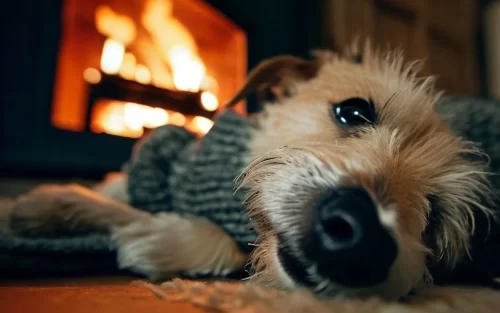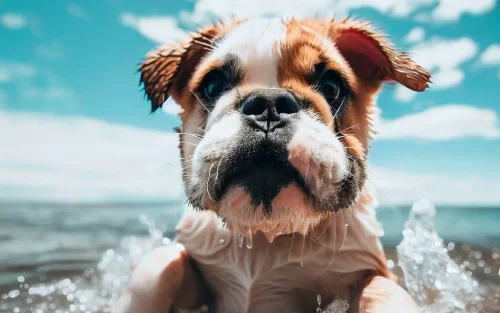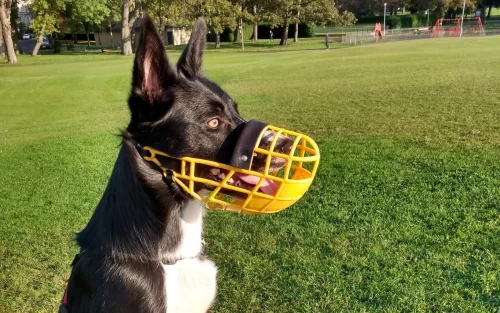As temperatures soar during the hot summer months, ensuring your furry companion stays cool and comfortable is crucial. Dogs can be susceptible to heat-related illnesses, such as heatstroke, which can be life-threatening if not addressed promptly.
This comprehensive guide will explore practical tips and strategies for keeping your dog cool and safe when the mercury rises.
Understanding Heatstroke in Dogs
We have written a complete guide on preventing heatstroke in dogs, which should be consulted if you have any concerns. What follows here is a summary of that article. If you suspect your dog has heatstroke, you should contact a veterinarian immediately.
Signs and symptoms of heatstroke
Heatstroke is a severe condition that can affect dogs when their body temperature rises too high. Signs of heatstroke in dogs include:
- Excessive panting
- Increased heart rate
- Drooling
- Vomiting or diarrhea
- Weakness
- Collapse
- Seizures
If you notice any of these symptoms, acting quickly to help your dog cool down and seek veterinary care is important.
Factors that increase the risk of heatstroke
Some dogs are more prone to heatstroke than others. Factors that can increase the risk include breed, age, and weight. Brachycephalic breeds (those with short noses), such as pugs and bulldogs, are particularly susceptible. Older dogs, overweight dogs, and those with pre-existing medical conditions are also at higher risk.
Environmental factors, like high humidity and lack of shade, can further increase the likelihood of heatstroke.
Preventing Heatstroke
Hydration
Keeping your dog well-hydrated is critical to preventing heatstroke. Ensure they always have access to fresh water, both indoors and outdoors. When you’re out and about, carry water and a collapsible bowl for your dog to drink from. Consider investing in a pet water fountain to encourage your dog to drink more.
Provide shade
Dogs need shade to escape the sun’s harsh rays. Create shaded areas in your yard using trees, umbrellas, or shade sails. When you’re out with your dog, bring a portable shade structure or seek out shady spots to rest in.
Avoid hot surfaces
Hot surfaces, like pavement and sand, can burn your dog’s sensitive paws. Test the temperature with the back of your hand before allowing your dog to walk on it. If it’s too hot for your hand, it’s too hot for your dog! Consider using dog booties to protect their paws or walk on the grass when possible.
Limit exercise during peak heat hours
Schedule walks and playtime during the cooler parts of the day, like early morning or late evening. Adjust the intensity of your dog’s exercise based on the weather, opting for less strenuous activities in the heat.

Cooling Techniques for Your Dog
Cooling products
Cooling vests and bandanas can help keep your dog’s temperature down. These products use evaporative cooling or gel packs to maintain a lower temperature than the surrounding air. Cooling mats and beds provide a cool surface for your dog to rest on, which can be especially helpful indoors.
Fans and air conditioning
Ensure your home is properly ventilated and cool for your dog. Use fans and air conditioning to regulate the temperature, and consider using a cool, damp towel on the floor for your dog to lie on.
Water play
Playing in water can be a fun way for your dog to stay cool. Introduce your dog to swimming in safe environments, like a calm lake or a dog-friendly pool. Use a kiddie pool or sprinkler for supervised water play in your yard.
Cooling treats
Frozen treats can provide a refreshing snack for your dog on hot days. Make homemade frozen treats using dog-safe ingredients, like peanut butter or fruit, or purchase store-bought options designed for dogs. A simple ice cube can also provide your pup a cool, crunchy treat.
Heatstroke Emergency Response
First steps
If you suspect your dog is suffering from heatstroke, act fast. Move your dog to a cooler area, such as an air-conditioned room or a shady spot. Offer water to your dog, but don’t force them to drink, as this can cause choking or aspiration.
Cooling your dog down
Apply cool, not cold, water to your dog’s body using a hose, shower, or wet towels. Focus on their neck, armpits, and groin area, where blood vessels are close to the surface. Avoid ice-cold water, as this can constrict blood vessels and slow the cooling process. Use a fan to increase air circulation and help your dog cool down more quickly.
Seeking veterinary care
Even if your dog seems to be recovering, it’s essential to contact your veterinarian immediately. Heatstroke can cause internal damage that may not be immediately apparent. Your vet can assess your dog’s condition and provide any necessary treatment. Be aware of the potential long-term effects of heatstroke, such as kidney damage or neurological issues.
Conclusion
By following these tips and being vigilant about your dog’s well-being during hot weather, you’ll be well-prepared to keep your beloved pet cool, happy, and healthy. Remember, prevention is always better than cure, so take the necessary precautions to ensure your dog stays safe in the heat.



